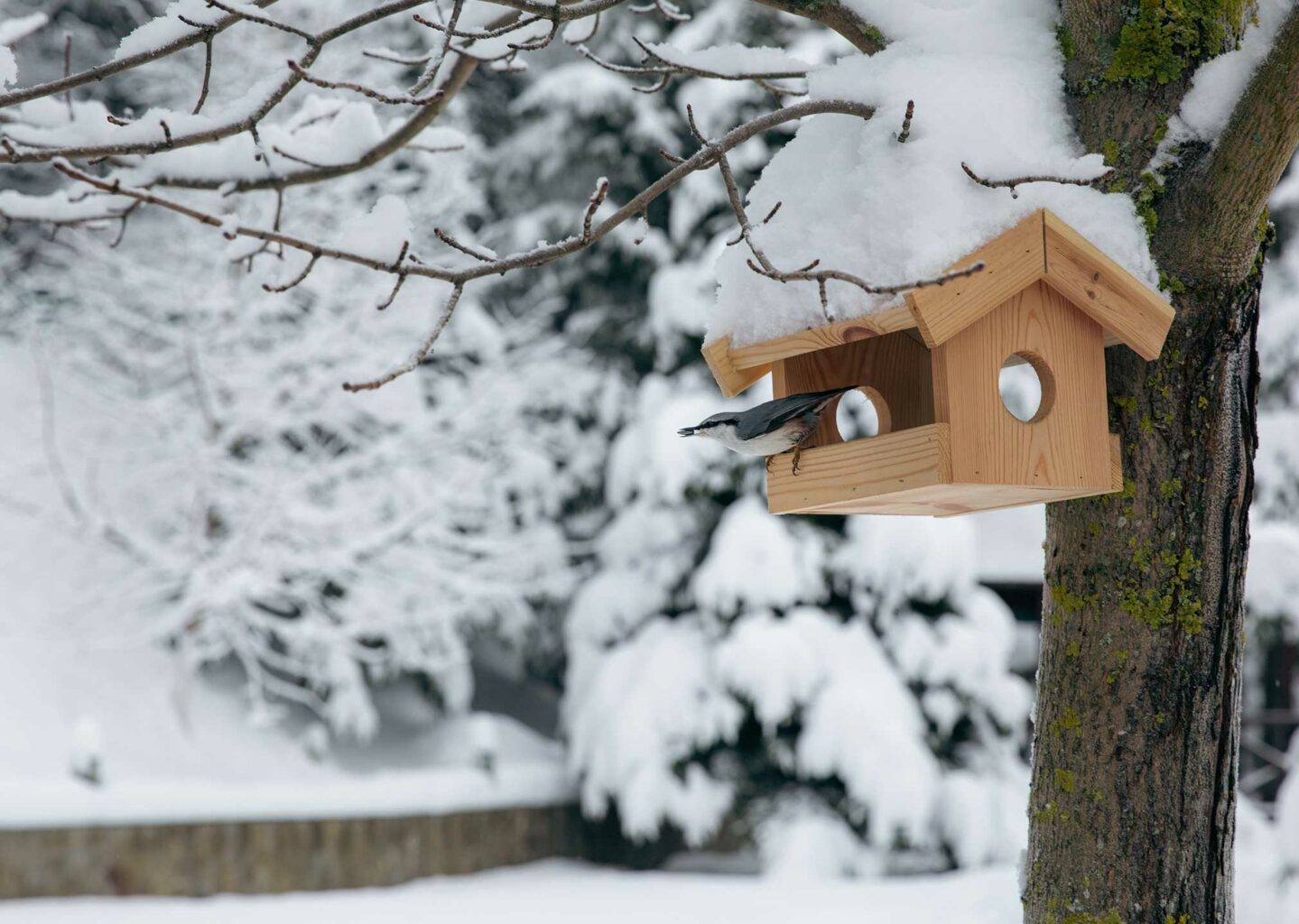By Vicki Spencer, Master Gardener
Wandering around your neighborhood, you may be dismayed by the bleakness of February’s bare-branched trees and shrubs. But look closely. Your spirits will be lifted by birds fluttering all around. While fun to watch, birds remind us that February is the most difficult month for wildlife seeking food and shelter. That’s why February has been designated National Bird-Feeding Month.
Create a Bird-Feeding Paradise
Bird feeding is an activity enjoyed by the entire family, and it’s rewarding to know you are helping birds when they are most vulnerable. While studying relationships between types and locations of feeders, and which species prefer which seeds, consider creating a more wildlife-friendly garden.
Wildlife-friendly gardens replace manicured lawns with a habitat that birds, butterflies and other wildlife require. This includes cover, nesting sites and fruiting plants. Imitating the natural habit that existed before your area was developed helps reduce, or eliminate, the use of pesticides that leave traces in insects eaten by birds.
Without pesticides, expect some imperfection. But in return, you will enjoy more birds and butterflies. And you’ll save money by using less water needed by lawns.
Your local nature center, native plant society or Audubon chapter can help you learn about your property’s natural history. Visit audubon.org/plantsforbirds to find information about bird-friendly plants and attracting birds and butterflies.
While envisioning a habitat garden, you might find your priorities begin to change. For instance, if dead trees (whose hollows provide good nesting sites) don’t propose a danger, you might consider leaving them.
If you don’t have — or don’t like — dead trees, you could add supplemental housing with pole-mounted nesting boxes and houses. They are better at deterring predators than tree-mounted ones.
Consider adding well-placed feeders to supplement natural food sources that are low in the winter. Birds need a clear view of potential predators, nearby cover, easy access to water and natural sources of food. Look for feeders designed to deter squirrels or you could go broke refilling seeds daily.
Adding water features helps birds thrive in our dry climate. If a pond is not practical, a simple bird bath does wonders. Some come with heaters, but they’re not required. Watch the weather and when temperatures dip, you can melt ice with warm water.
Butterflies are another benefit of habitat gardens. Adding colorful, nectar-rich plants attracts these avid pollinators. But if you want to encourage habitation, include plants suitable for larval stages in your garden design.
You should also provide mineral sources. These can simply be small patches of wet soil. Or you can create butterfly puddling sites by adding shallow dishes with pebbles covered with water. As butterflies visit the dishes, they will take in trace minerals from the water. Consult with your native plant society and visit your local botanic gardens (which may feature a butterfly house) for more ideas.
Don’t feel you must take drastic measures to redesign your entire yard for National Bird-Feeding Month. Minor modifications made consistently, year after year, will lead you toward a more habitat-friendly garden that will benefit birds, butterflies and other wildlife.
Master Gardener Vicki Spencer has an eclectic background in conservation, water, natural resources and more.

